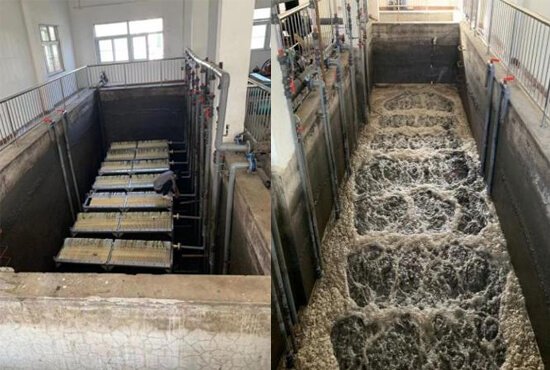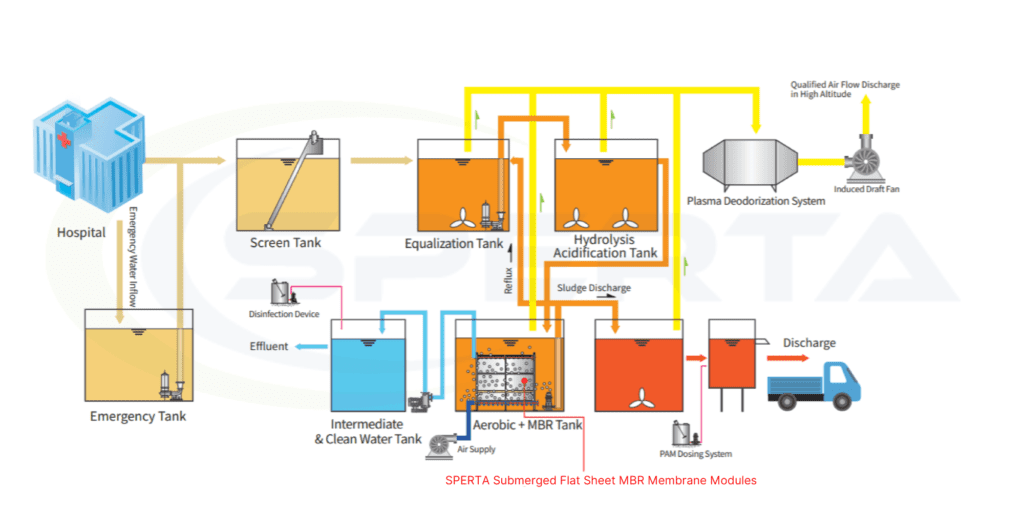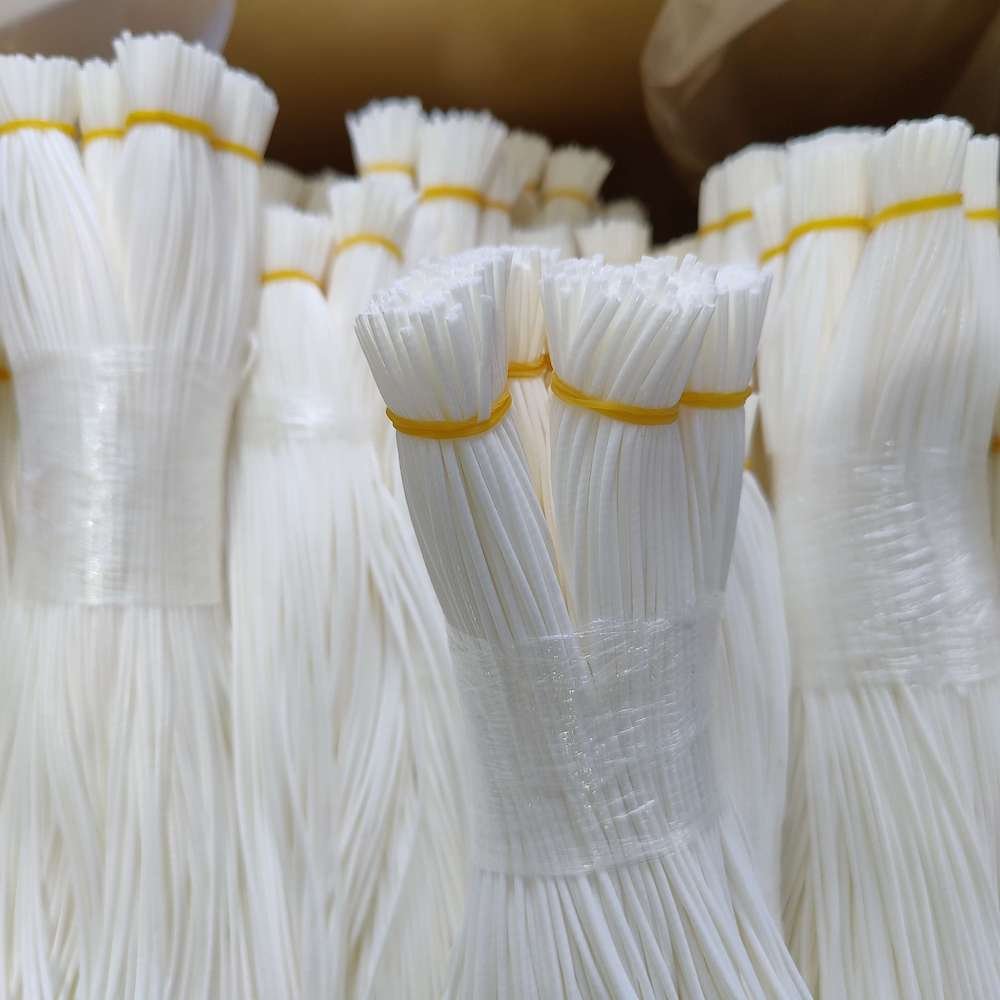Last Updated on August 25, 2022 by Kevin Chen
The sewage discharged by the hospital can be divided into four types. The first type is the sewage from the infectious diseases department; the second is the radiology department wastewater; the third is the general wards, outpatient areas, and living areas; the fourth is laboratory wastewater.
Hospital sewage contains certain pathogenic bacteria and viruses: space pollution, acute infection, and latent infection. Hospital sewage containing pathogenic microorganisms is discharged into the urban sewer or environmental water without disinfection treatment, potentially causing water pollution, causing various diseases and infectious diseases, and seriously endangering people’s health.
The below 2 cases provide an overview of the MBR membrane application for the hospital wastewater treatment process, including how it works and its benefits.
Case 1: Hospital Wastewater Treatment
The sewage discharged from the hospital is mainly the domestic sewage produced by the daily life of its staff and patients and the medical wastewater in medical activities. The wastewater contains infectious bacteria such as bacteria and viruses.
To improve the internal sewage treatment process of the unit, the hospital transformed the sterilization and disinfection device into a membrane biological (MBR) treatment device and disinfected it with ultraviolet light. The treated wastewater is finally connected to the treatment plant through the urban sewage pipe network for treatment.

MBR Project Overview
| Location | Anhui Provincial Cancer Hospital, China |
| Type of Wastewater | Hospital domestic sewage |
| Flow | 2,000 m³/d |
| Commissioned | Since Nov. 2021 ( SPERTA MBR Membrane ) |
MBR Process Flow Chart

Influent Condition and Effluent Quality
| Index | Influent Condition | Designed Effluent | Actual Effluent |
| CODCr(mg/L) | ≤400 | ≤50 | 37 |
| BOD5(mg/L) | ≤120 | ≤25 | 17 |
| SS(mg/L) | ≤250 | ≤10 | 2.5 |
| Chroma (degrees) | ≤200 | ≤20 | 10 |
| pH | 6~9 | 6~9 | 7~9 |
| Turbidity(NTU) | ≤30 | ≤5 | 0.4 |
| Escherichia Coli (PCs. / L) | —- | 1500 | —- |
Case 2: Hospital Wastewater Treatment
This project is located in Xinxiang psychiatric hospital, with a limited footprint. In such a case, our company provides MBR flat membrane solution under the comparison of various processes to get the stable effluent quality up to class A standard by considering saving investment and optimal land utilization.
The project deals mainly with domestic wastewater. The raw water is mainly the wastewater discharged from the medical room, ward, laboratory, operating room, dormitory, and hospital medical staff canteen. The feeding water is characterized by poor water quality balance, low COD concentration, and high ammonia nitrogen concentration.
MBR Project Overview
| Location | Xinxiang Psychiatric Hospital, Henan Province, China |
| Type of Wastewater | Hospital Domestic Sewage |
| Flow | 600 m³/d |
| Commissioned | Since June. 2019( SPERTA MBR Membrane) |
MBR Process Flow Chart

Influent Condition and Effluent Quality
| Index | Influent Condition | Designed Effluent | Actual Effluent |
| CODCr(mg/L) | ≤400 | ≤50 | 37 |
| BOD5(mg/L) | ≤120 | ≤25 | 17 |
| SS(mg/L) | ≤250 | ≤10 | 2.5 |
| Chroma (degrees) | ≤200 | ≤20 | 10 |
| pH | 6~9 | 6~9 | 7~9 |
| Turbidity(NTU) | ≤30 | ≤5 | 0.3 |
| Escherichia Coli (PCs. / L) | 2100 | 1500 | 790 |












